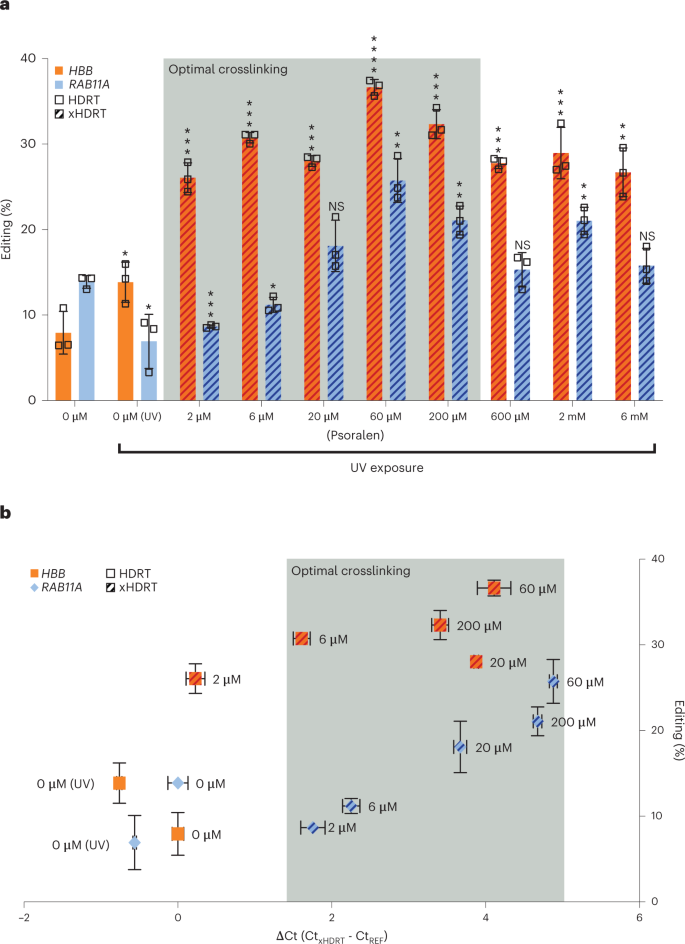2023-05-10 カリフォルニア大学サンタバーバラ校(UCSB)
◆この新しい方法は、ホモロジー指向修復の段階を約3倍増加させると同時に、突然変異頻度を増加させたり、修復結果を変えたりすることなく、CRISPR/Cas9編集の効率を高めることができます。
◆この発見により、疾患研究や前臨床研究など、エキスビバ(体外)遺伝子編集アプリケーションで最も活用される可能性があります。
<関連情報>
- https://www.news.ucsb.edu/2023/021037/researchers-discover-way-improve-nonviral-gene-editing-well-new-type-dna-repair
- https://www.nature.com/articles/s41587-022-01654-y
相同修復テンプレートDNAの鎖間架橋により、ヒト細胞での遺伝子編集を促進することに成功 Interstrand crosslinking of homologous repair template DNA enhances gene editing in human cells
Hannah I. Ghasemi,Julien Bacal,Amanda C. Yoon,Katherine U. Tavasoli,Carmen Cruz,Jonathan T. Vu,Brooke M. Gardner & Chris D. Richardson
Nature Biotechnology Published:27 February 2023
DOI:https://doi.org/10.1038/s41587-022-01654-y

Abstract
We describe a strategy to boost the efficiency of gene editing via homology-directed repair (HDR) by covalently modifying the template DNA with interstrand crosslinks. Crosslinked templates (xHDRTs) increase Cas9-mediated editing efficiencies by up to fivefold in K562, HEK293T, U2OS, iPS and primary T cells. Increased editing from xHDRTs is driven by events on the template molecule and requires ataxia telangiectasia and Rad3-related (ATR) kinase and components of the Fanconi anemia pathway.


